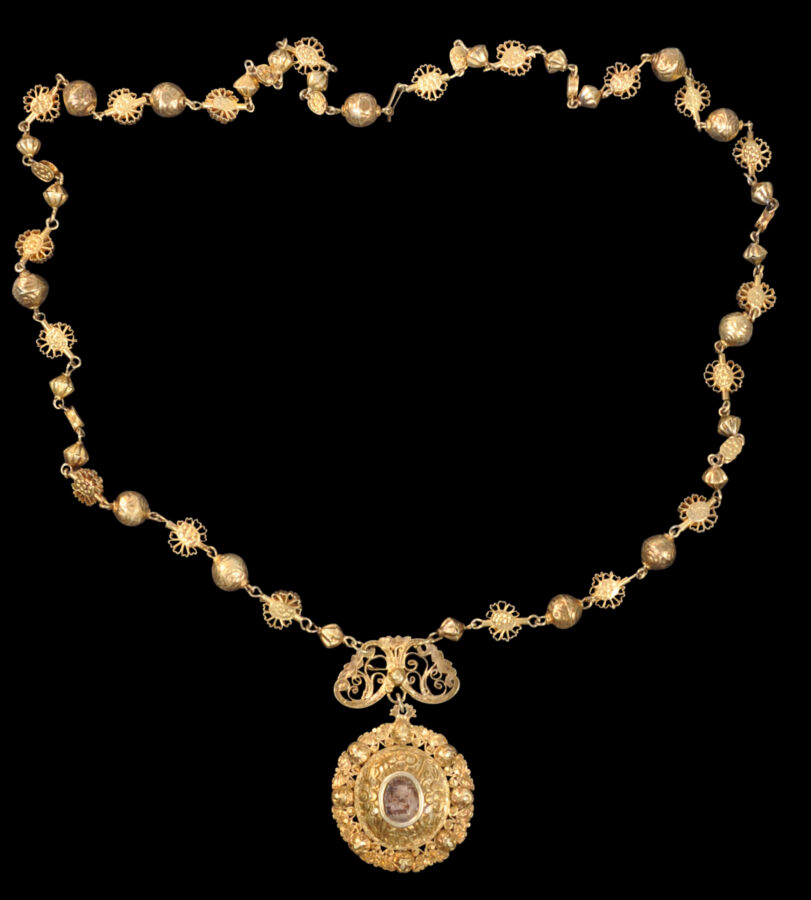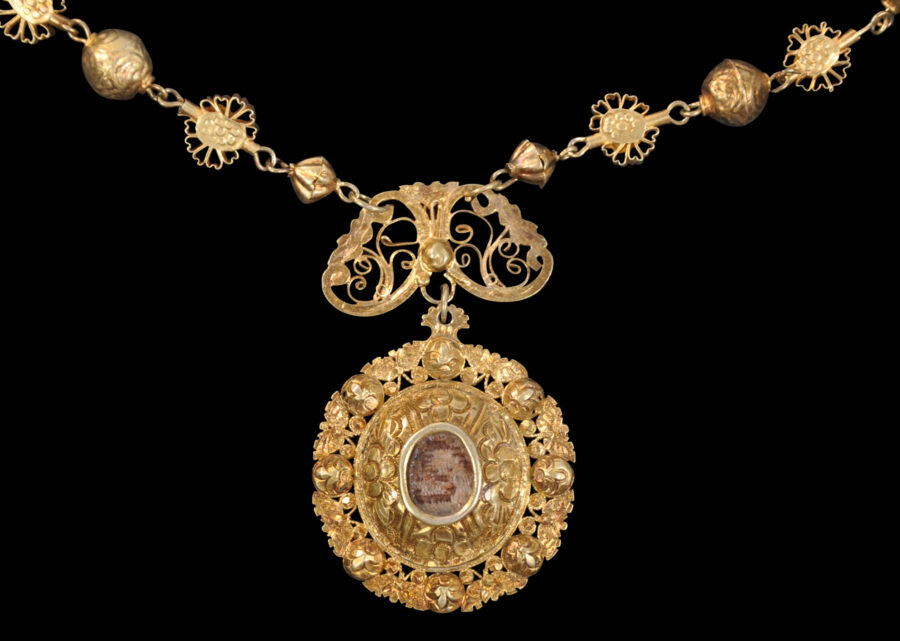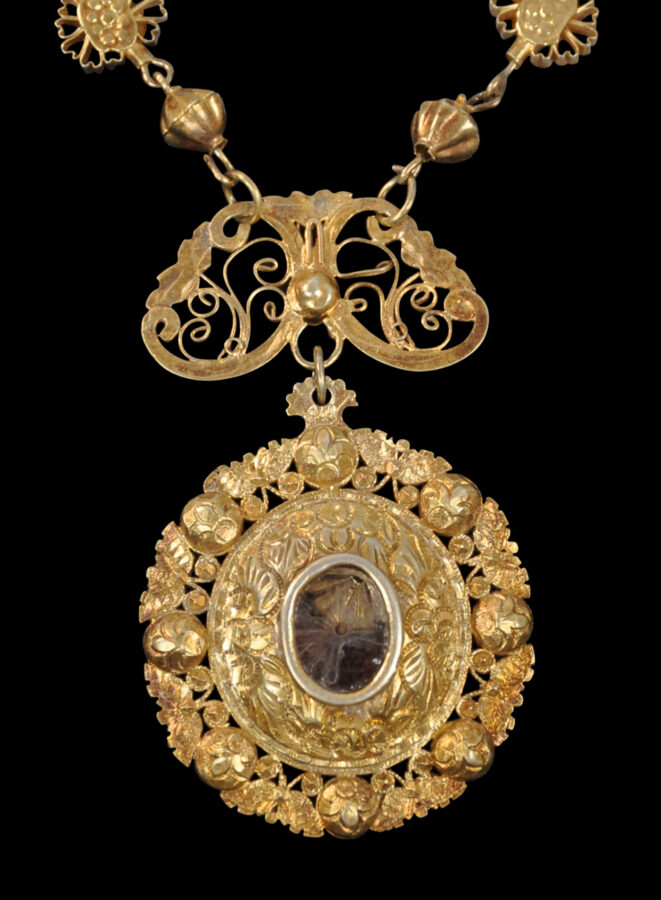Enquiry about object: 9714
Colonial Philippines Silver-Gilt Catholic Rosary (Tamborin)
probably Cagayan, Luzon, Philippines 19th century
circumference: 73cm, length of pendant: 5.9cm, width of pendant: 3.4cm, weight: 37g
Provenance
private collection, London, UK
Spanish colonialism spread Catholicism to much of the Philippines, most particularly the northern islands. This was reflected in the jewellery of the locals. Local versions of the Catholic rosary known as the tamborin became popular, particularly with local Chinese mestizo women.
This silver-gilt rosary is typical of the versions that were produced in the Philippines from the early 19th century. They became more ornate and intricate and became increasingly worn as jewellery and increasingly devoid of their religious significance.
This version comprises a long chain of gilded silver filigree and other beads and then a double-sided oval pendant with an intricate gilded silver frame and with glass on each side to reveal a reliquary (which appears to be a textile fragment) inside. The reliquary pendant hangs beneath a butterfly made of gilded silver filigree. The rosary shows much Spanish colonial influence, but the butterfly aspect is very particular to 19th century Philippines’ examples.
See Villegas (1983, p. 141) for similar examples.
References
Richter, A., The Jewelry of Southeast Asia, Thames & Hudson, 2000.
Villegas, R., Kayamanan: The Philippine Jewellery Tradition, Central Bank of the Philippines, 1983.




